Horror Business: The Making of Damien Leone’s TERRIFIER

Rampant fan art, rave reviews, and a downright alarming number of tattoos that flash his signature bloodstained smile, all point to the fact that Art the Clown is beginning a steady rise to slasher stardom. This sudden surge in popularity is enough to wonder: where did this character come from and how did director, Damien Leone, make this low budget hit stand out so much amid the many titles within the competitive horror landscape?
The character of Art the Clown has actually been developed by Leone over the course of 3 films. Having started as a minor character in Leone’s first film, a short called The Ninth Circle, Art then went on to star in his own short (also called Terrifier) before being adapted into a full length feature called All Hallow’s Eve, which compiled the two previous shorts into a VHS style anthology, bookended with another wraparound story, also starring Art.
The many iterations of Art the Clown have allowed the character to be polished and refined to the point where it seems we horror fans just might have gotten the next great slasher franchise we’ve all been waiting for! We sat down with Leone to hear about how Terrifier went down, but, before getting to the interview, here are Damien Leone’s 3 keys for aspiring directors.
- Make something that stands out and gets people talking. In a market flooded with unoriginal copycat concepts, your film needs to have something notably different that will get people talking. In the case of Terrifier, this was the strong special effects (hand crafted by Leone himself) and the grisly but inventive violence.
- Learn a complementary skill. Leone’s background as a special effects makeup artist not only opened doors for him in the way of meeting producers, but enabled him to make Terrifier shine above larger budgeted movies as he did all the effects himself.
- Deliver the gore but be classy about it. The gore in Terrifier stood out chiefly among most other recent horror entries, but despite its brutality, Leone still showed artful restraint through the use of cutaways and editing, even during the film’s centerpiece hacksaw scene. To avoid getting into Hershell Gordon Lewis/torture porn territory, show the audience what they want to see but avoid holding on the shot for too long. It’s a fine balance that can make or break the efficacy of your kill scenes.
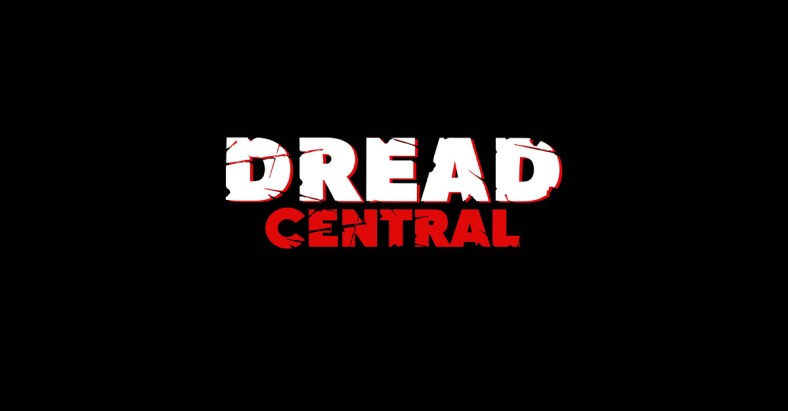
Dread Central: Hey Damien, how’s it going?
Damien Leone: Good buddy, what’s going on?
DC: Not a lot! Nice to finally talk to you. I’ve been a big fan since Terrifier came out on the scene, so definitely excited to chat. So from everything we’ve been reading about Terrifier, a lot of the articles speak to it’s iconicism and how fresh and new it is from recent horror movies. As you were approaching this film, was there any kind of void that you saw in the horror landscape that you wanted to fill?
DL: Yes… There weren’t any slashers that we grew up with in the eighties and nineties that were really new … maybe Jigsaw was the only new one at that time but before that you had Scream and you had I Know What You Did Last Summer, but those weren’t the kind of slashers that I grew up idolizing. The more iconic ones, the more graphic ones, the grittier, the more violent ones are the ones that I really enjoyed as a kid. I felt like I could do something fresh but modern in that regard. Moreso with clowns, I felt like there was a void with clowns that I hadn’t quite seen done the way I felt like I could execute one. Art the Clown kind of came out of all that and whatever I felt was missing with clowns. At that time the original Pennywise was really the only clown on the scene and he wasn’t even really a Slasher… I tried to do everything the opposite of what Pennywise is … I consciously went out of my way to make Art the Clown the complete opposite of Pennywise; Art is bald, he’s black and white, Pennywise is colorful, he has hair, Pennywise speaks, Art doesn’t, Pennywise doesn’t use weapons, Art the Clown uses any weapon he can get his hands on, so all these little things came together.
DC: And Art first showed up in The Ninth Circle.
DL: Yeah, The Ninth Circle was my first official short film as an aspiring filmmaker. I wanted it to be something that was going to stand out especially with my special effects, like my calling card. I put as many special effects in it as I could and tried to make it as cool as it could be in a short amount of time. I tell people it was my kitchen sink film … I threw in everything, clowns, witches, demons, monsters, everything up against the wall hoping something would stick.
DC: And Art the Clown was the thing that stuck.
DL: After everybody watched it, he was the character that people kept saying, ‘yeah that’s all cool but that clown, you’ve really got something there … you should do more with that.’ And so on, so eventually I listened to those people and I kept taking him further.
DC: Do you recommend aspiring filmmakers start with a short as a stepping stone to directing a feature?
DL: I don’t really know what another alternative would be. Whenever aspiring filmmakers ask me for any advice I always tell them to make something, no matter what it is, that is going to really stand out … Even when I was making Terrifier I knew we had to put stuff in that movie that was going to make it stand out next to Hollywood movies … what’s going to make people talk about it? Luckily people already really liked Art the Clown but I still knew we had to do things with the kill scenes and the violence that would bring this movie to another level.
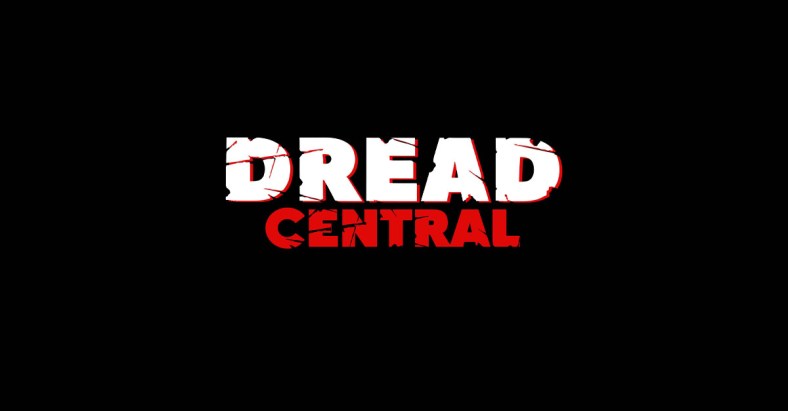
Closing title shot from the original Terrifier short from 2011
DC: It’s called exploitation for a reason!
DL: Exactly right! You should wear that like a badge of honor. I’ve heard people say “the violence in Terrifier is gratuitous and has no purpose” and I’m like yeah … it’s definitely gratuitous, the violence is definitely the star of the film. So I tell filmmakers, just do something crazy that’s going to stand out.
DC: The Terrifier short was such an awesome, highly concentrated vision of pure grindhouse nastiness, it was really awesome!
DL: Thanks!
DC: When you made the short and put it on YouTube did you start getting reactions to it right away?
DL: 100%. That’s how the producer (Jesse Baget, producer of All Hallow’s Eve) found it … I submitted it to a few festivals, horror festivals, it actually got turned down by most of the big horror festivals. It had around a hundred and twenty thousand views, strictly on word of mouth … The producer was looking for Halloween based shorts on YouTube and he was just going to make an anthology based on them … I wanted to go from the Terrifier short film to the Terrifier feature, but this was the opportunity that was presented to me at the time. It was very exciting, hearing: ‘hey, this is going to be in stores, it’s going to be on DVD!’ At that time it was the most amazing news I had ever heard. I was stoked.
DC: It’s pretty crazy how YouTube is birthing this whole new generation of directors like Fede Alvarez was discovered through YouTube and then he got to direct the Evil Dead remake, like within a year. Same thing with Neill Blomkamp.
DL: It’s a blessing, especially because the equipment is cheaper now, more accessible, so a filmmaker can go and make something for cheap that actually looks incredible and people take it seriously. Now you have so many films that it’s just hard to sift through everything. So that’s the pro and the con. It’s funny, I heard Quentin Tarantino and Robert Rodriguez actually talked about this a long time ago, Robert Rodriguez was saying, ‘everything’s cheaper, it’s easier to make something but there’s just so much more that it’s hard to get noticed at this point.’
DC: I think I saw that interview, it was at Comic-Con … So if you make something good it’s going to stand out. I think YouTube democratizes that probably better than anything. If it’s really good, people are going to share it and it’s going to go viral and you’re eventually going to get noticed.
DL: Totally.
DC: Can you tell me about the process in between wrapping All Hallow’s Eve and getting Terrifier made?
DL: I was always trying to raise money for Terrifier. Even though All Hallow’s Eve was getting a little bit of notoriety nobody had enough faith in it to make an Art the Clown spinoff. I always believed wholeheartedly in the character. Even though I made him, I truly saw something special in him … I knew there was something there that was working. Eventually I got fed up with trying to find the money so I did an Indiegogo campaign. Then on a whim, I reached out to a buddy of mine named Phil Falcone who’s also a filmmaker and he actually became the producer of Terrifier. I was just going through my emails and sending the Indiegogo link to everybody and asking them to spread the word. He emailed me back and he’s like ‘what are you trying to raise?’ And I told him a very little amount of money and he’s like ‘hey, I’ll just put it up! Make it and make me a producer.’ He’s responsible for it, he came in and saved the day because we didn’t make the Indiegogo campaign happen so if he didn’t come in we would have never made the movie. He’s our savior, Mr. Falcone.
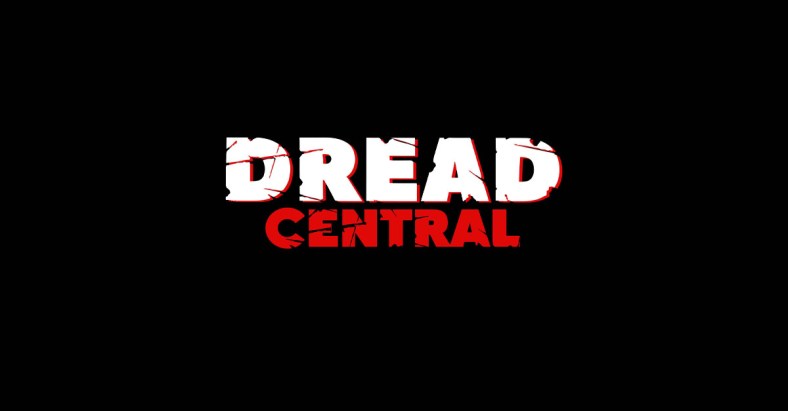
DC: One thing a lot of audiences are reacting to is the no holds barred nature of Terrifier. It seems that we’re in a brave new era where horror directors don’t care about achieving a clean R rating anymore. How did you get emboldened enough to say, ‘I don’t care about the rating, I’m just going to make the film I want’?
DL: Well, it’s two things: unless I have a studio backing me I’m never going to tiptoe around the violence if I don’t have to. The main reason we put that violence in is that I wanted it to really stand out. Since I’m a special effects artist, I knew that was going to be one of our strong suits going into the movie. So just packing it with special effects and making them as graphic as possible, I knew that we would stand out. I wanted it to be as graphic and as grisly as possible. I knew people were going to leave the movie talking about the hacksaw scene. It’s so insane and graphic that you know people are going to talk about it. I just tried to put as many things like that in the movie as I could. Nowadays you don’t really have to worry about the rating board unless you’re in Hollywood, which is the one percent. No one is in Hollywood anymore.
DC: Nowadays it seems that there hasn’t been a lot in horror that’s been really groundbreaking, and I think that this disregard for the MPAA among horror directors is going to lead to so many more great movies coming out – it’s just going to open up the floodgates and we’re going to see a lot more stuff that we haven’t seen before.
DL: I think so too … it’s going to be great!
DC: Speaking of the hacksaw scene, it’s a moment in Terrifier that people constantly refer to as ‘the scene.’ It feels like it’s been a while since moviegoers have used the term ‘the scene.’ Were there any equivalent scenes in previous movies that affected how you came up with the hacksaw sequence?
DL: That’s a good question … There’s so many, I’m just the biggest horror fan. Like the whole ending of Day of the Dead with everyone getting killed and Joseph Pilato getting cut in half … Here’s the thing with most slasher movies, especially the American ones in the eighties, Friday the 13ths and stuff, even if the scenes are graphic, you only saw them for quick glimpses, a few frames. Especially Friday the 13th: The Final Chapter, they’re some pretty graphic and cool kill scenes but you only see a few frames and then it cuts away. So it’s a lot of build up, you see the knife go up and then the knife goes into the person’s face and then it’s over. I wanted to try and approach Terrifier with the Italian giallo style of Suspiria … So I would say the first kill in Suspiria with the heart, was the inspiration for the kills in Terrifier. The scene is just relentless, it never ends … when the person should be dead they’re still alive … That’s the good stuff! Especially with a slasher movie, that’s the stuff we all want to see, and it’s almost insane when you go to see a slasher movie and you’re cheated out of the most important part of the kill. So that’s really what we did.
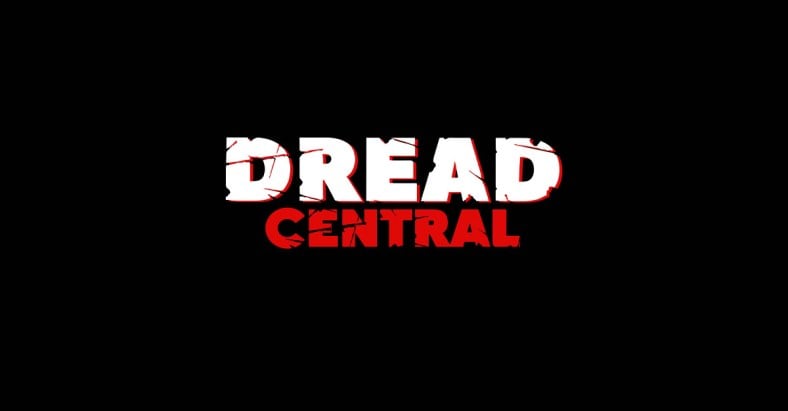
DC: I’m a huge giallo fan. When you first see Art coming at the girls in the beginning and there’s this heavy red background and contrasting blue lighting on him I thought ‘holy shit that looks like an Argento movie!’ Obviously the film’s also got a heavy seventies grindhouse vibe, can you talk about how you integrated these different cinema styles into the film?
DL: I’m a fan of so many different types of movies, not just horror movies, and the seventies is by far my favorite decade of film. I just pick and choose and take from here and there … Things that resonate with me I always keep in the back of my head and when the time comes I can pull them out. Hopefully it comes out being something fresh and organic and something that’s my own, even though it’s from a lot of different sources. As far as grindhouse, you see a lot of people going out of their way to make a modern exploitation movie and they purposely make them corny. Those original grindhouse movies weren’t purposely corny, the beauty of them is that they suffer from low budgets but they’re trying their best to be a serious movie, it just becomes inadvertently comical. That’s the charm of those movies. That’s why they work. When you purposely try and make them corny, that’s when it doesn’t work for me. Those are the movies I really love the most and I think it just shows. Trying to make one of those, but a genuine one, not a mockery, is something I think people can sense.
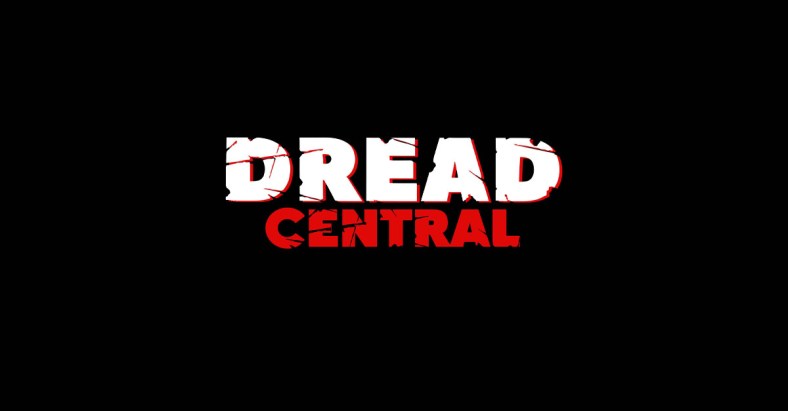
DC: I want to get into was the marketing of the film. I remember suddenly going on Instagram and seeing Art the Clown everywhere, before I’d even seen Terrifier. I know you did some promotional work with the lovely and talented Brandy (an Instagram horror influencer with the handle: HorrorVixen101) but, did you have a marketing strategy?
DL: It’s so crazy. We had zero marketing other than Brandy, it was all word of mouth. It was all fans. And me and Dave Thornton who plays Art the Clown, we’re just super interactive and we’re always answering fans and having conversations with them and everything like that, so it just spread like that for the most part.
DC: And then all of these people started showing up on Instagram with Art the Clown tattoos, that must have been nuts!
DL: It is man, it’s surreal. There’s definitely over twenty tattoos at this point.
DC: That’s amazing. It speaks to how iconic Art is.
DL: Thank you, yeah … every day I notice either new artwork, people are making figures and ornaments … It’s like out of my hands at this point. Like not even mine anymore.
DC: So looking at the movie in its finished form what would you have invested more in and what would you have invested less in? Not necessarily money, it could be focus, energy, whatever.
DL: My biggest regret is I wish I would have fleshed out Samantha Scaffidi’s character more, who was the sister, Victoria, the second heroine in the movie who gets deformed in the end … Also, it’s tough to direct and do the special effects because that definitely takes a toll and both of those jobs get sacrificed to a degree. I would rather hire a great makeup crew to do all the effects and I could just focus 100% on directing … For Art the Clown, we had to make him up probably 19 times throughout the course of the movie … It takes 2-3 hours and that’s before we go into a 12-14 hour day and then I got to help him clean it off, and then by the time you go home and go to sleep you’ve got to come back, it’s insane. You do that for five days in a row, you’re dead. Half of the time I was just on autopilot making that movie.
DC: Were there any books or resources or anything educational that significantly helped you along your way in becoming a director?
DL: In terms of special effects, I pretty much owe everything to Tom Savini. He’s really my idol and the VHS tape Scream Greats, it came out in ’86, it’s an hour-long VHS on his work, it’s a documentary … that and The Making of Thriller. Those two VHSes were the first time I ever saw makeup artists creating monsters and zombies and stuff like that. So that really blew my mind. I always cherished those tapes. I was watching those when I was like 8, and finally when I was 12 I started to teach myself what they were doing in the tapes. But really, Savini was my biggest influence when it comes to special effects.
DC: What is the most common bad advice you hear given to aspiring directors?
DL: I don’t know if it’s bad advice, but what’s mostly disheartening is when people just tell you to stop. Give up, get a real job and things like that. That really hurts, that will really beat you down especially when it’s people close to you. But you absolutely can’t listen to that, no matter what. If you really believe in it and it’s all you want to do, you just have to do it no matter what, no matter how hard it gets, how defeated you feel. You just have to keep doing it … I never wanted to do anything else with my life other than make movies and make monsters.
DC: In the context of those versus movies, like Freddy vs. Jason, Alien vs. Predator, who would you like to see Art the Clown face off against?
DL: I don’t know, who could he face off against where it makes sense?
DC: Captain Spaulding maybe? Because he’s a clown and he uses guns too.
DL: Yeah, the movie would just be five minutes long of them just having a duel, haha.
DC: Is there anything you can tell us about a sequel for Terrifier?
DL: I’m writing the script as we speak, there’s going to be more of a traditional storyline that you see in your classic slasher movies. I’m going to elaborate on Art the Clown’s backstory. It’s definitely going to be more violent or as violent as the first one. I don’t think it’s going to disappoint any fans of the original for sure … Definitely going to try and rival the hacksaw scene in some way … It’s definitely tough coming up with things that will rival it. It’s very easy to make extraordinarily graphic kill scenes, but, and it sounds ridiculous, I still try and approach it with some level of class.
DC: Right, you’ve got to be inventive.
DL: Right, there’s a fine line where it just becomes so exploitive and so graphic and that’s all that it’s about … Even if we show a lot of graphic stuff, I still try and do that quick cut, even though I keep cutting back to it, I try not to linger on it too long to the point where it defeats its effectiveness. Also, you don’t want to ruin the illusion of the effect. The longer you linger on, the cheaper it’s going to look. So that’s one of my biggest challenges writing this. It’s not the story, it’s trying to come up with those kill scenes … There’s a few kill scenes that can go neck and neck with the hacksaw scene so far.
DC: Well, I can’t wait to see it man!
DL: Thanks man!

Horror Business is a series that will profile modern horror directors through first-hand accounts of how they got their films from initial idea to the screen. We get into everything from the creative and writing processes to the business sides of producing, funding, shooting, and distributing while distilling the specific techniques, resources, and best practices from those who are making it happen in today’s horror landscape.
Categorized:News

